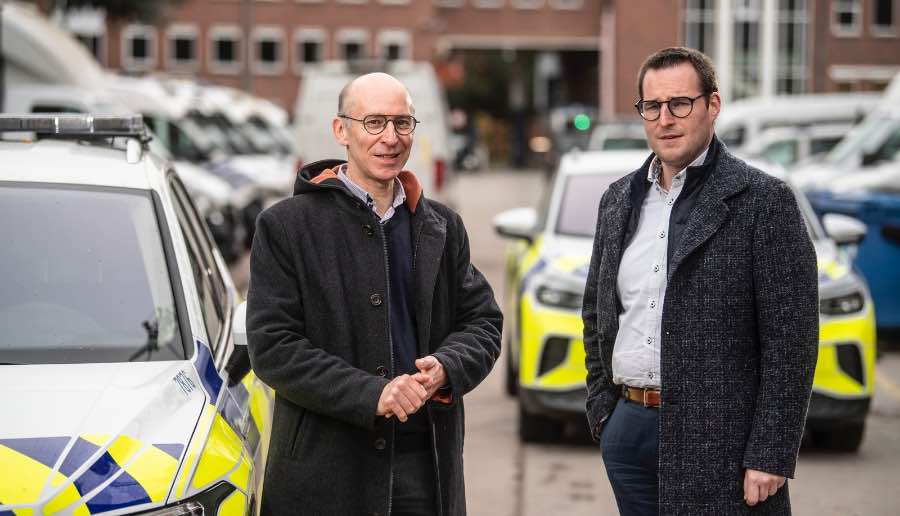
ASTRID, the critical communications provider for emergency and security services, is working tirelessly to develop a next-generation broadband network to meet the evolving needs of its users. As the organization prepares for this major transition, key questions about network design, application integration, and migration strategies are being addressed through the SDAC (Solution Design Advisory Committee).
The SDAC is a collaborative platform that brings together representatives from ASTRID’s diverse user organizations, including police, fire services, emergency medical teams, and other critical service providers. Jo Dewaele, Head of Marketing Strategy at ASTRID and Chair of the SDAC, emphasized the importance of user involvement in shaping the future network. “The SDAC functions as both a think tank and an advisory body. By engaging users from the start, we ensure that the new network will meet their operational needs and expectations.”
Balancing the Needs of Multiple Stakeholders
One of the committee’s key members, Ruben Vansevenant, Head of ICT for the Ghent Police Zone, represents the Flemish local police on the SDAC. Vansevenant highlights the importance of meeting stringent requirements for critical communications. “The new broadband network, based on 4G/5G technology, offers exciting new communication opportunities. However, it must provide the same high level of reliability, security, and availability as the current TETRA network, while also being user-friendly and sustainable. This is a significant transition, and decisions must be made carefully to avoid the need for future changes.”
Expert Collaboration for Informed Decisions
The SDAC meets monthly to review proposals from ASTRID’s technical teams and provide feedback. Dewaele explains, “In addition to reviewing specific proposals, the SDAC proactively explores various topics and makes recommendations. We also invite external experts to provide valuable insights, ensuring that our decisions are based on a comprehensive understanding of the challenges and solutions. We are also learning from international developments, as many countries are facing similar challenges.”
Exploring Complex Issues
Key topics of discussion include mobile device management and the balance between security, flexibility, and cost. Vansevenant notes, “Every decision about devices and applications has a significant impact on both technical and operational aspects. We must consider whether a multifunctional device or multiple devices with network access would be more appropriate. For example, security is often a key priority, but it can come at the cost of flexibility and increased costs. Our goal is to find solutions that are both practical and add value for all users.”
One of the most critical issues under consideration is the migration from the current TETRA system to the new broadband network. Vansevenant explains, “This migration is a complex process, with challenges related to new equipment, fleet conversions, and staff training. During the transition, it’s vital that all organizations continue to operate without interruption to ensure public safety. Timing and budget control will be essential.”
Dewaele adds, “Both the existing radio network and the new broadband network will operate in parallel during the transition, allowing users to migrate gradually. A separate consultation platform, the Operational Advisory Committee, will be established to guide the practical implementation of this migration.”
From Advisory Input to Final Recommendations
The recommendations from the SDAC are submitted to ASTRID’s User Advisory Committee and User Strategic Consultation Committee, where the final decisions are made on behalf of all ASTRID users. Dewaele explains, “While the SDAC focuses on mobile communications, the future evolution of emergency response centers is being explored under the NextGen PSAP (Public Safety Answering Point) initiative. We have intentionally separated these two programs to manage their technical complexity, but they will eventually be integrated for a seamless transition.”
Engaging All Stakeholders
Vansevenant emphasizes the importance of securing broad support for the project: “For full buy-in, decisions must be made based on a clear understanding of their impact. We need to ask: What happens if we do nothing? What are the costs? How does this improve operational efficiency? This process helps us build internal consensus and generate enthusiasm among all stakeholders.”
“While the transition to digital is undoubtedly challenging, it opens up new opportunities for better communication and data sharing across disciplines,” Vansevenant concludes. “This is a critical step forward in ensuring that we are ready for the challenges of tomorrow. We are now at a pivotal moment in this journey.”